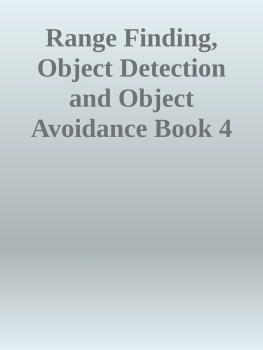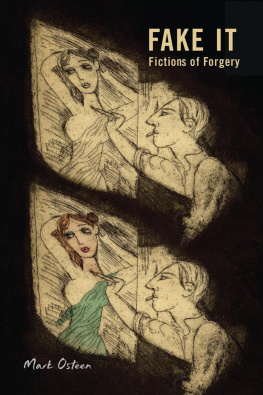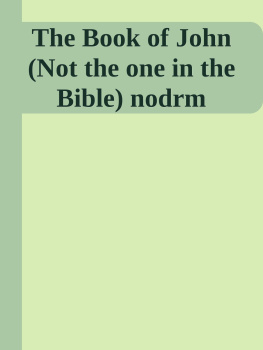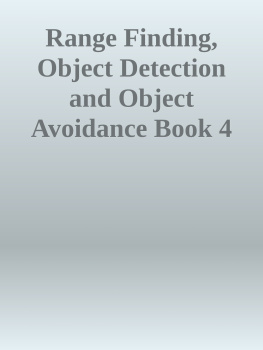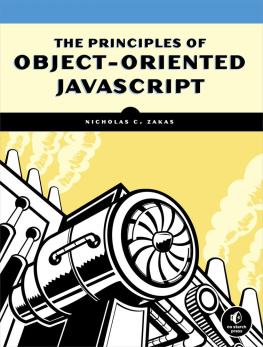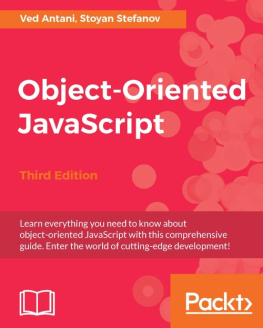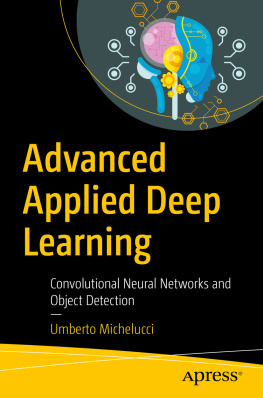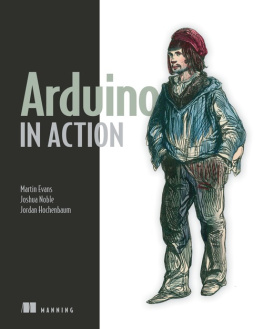Unknown - Range Finding, Object Detection and Object Avoidance Book 4 of the Arduino Short Reads Series nodrm
Here you can read online Unknown - Range Finding, Object Detection and Object Avoidance Book 4 of the Arduino Short Reads Series nodrm full text of the book (entire story) in english for free. Download pdf and epub, get meaning, cover and reviews about this ebook. genre: Home and family. Description of the work, (preface) as well as reviews are available. Best literature library LitArk.com created for fans of good reading and offers a wide selection of genres:
Romance novel
Science fiction
Adventure
Detective
Science
History
Home and family
Prose
Art
Politics
Computer
Non-fiction
Religion
Business
Children
Humor
Choose a favorite category and find really read worthwhile books. Enjoy immersion in the world of imagination, feel the emotions of the characters or learn something new for yourself, make an fascinating discovery.
- Book:Range Finding, Object Detection and Object Avoidance Book 4 of the Arduino Short Reads Series nodrm
- Author:
- Genre:
- Rating:4 / 5
- Favourites:Add to favourites
- Your mark:
- 80
- 1
- 2
- 3
- 4
- 5
Range Finding, Object Detection and Object Avoidance Book 4 of the Arduino Short Reads Series nodrm: summary, description and annotation
We offer to read an annotation, description, summary or preface (depends on what the author of the book "Range Finding, Object Detection and Object Avoidance Book 4 of the Arduino Short Reads Series nodrm" wrote himself). If you haven't found the necessary information about the book — write in the comments, we will try to find it.
Unknown: author's other books
Who wrote Range Finding, Object Detection and Object Avoidance Book 4 of the Arduino Short Reads Series nodrm? Find out the surname, the name of the author of the book and a list of all author's works by series.
Range Finding, Object Detection and Object Avoidance Book 4 of the Arduino Short Reads Series nodrm — read online for free the complete book (whole text) full work
Below is the text of the book, divided by pages. System saving the place of the last page read, allows you to conveniently read the book "Range Finding, Object Detection and Object Avoidance Book 4 of the Arduino Short Reads Series nodrm" online for free, without having to search again every time where you left off. Put a bookmark, and you can go to the page where you finished reading at any time.
Font size:
Interval:
Bookmark:
Range Finding, Object Detection and Object Avoidance Book 4 of the Arduino Short Reads Series Gary Hallberg North Border Tech Training First Edition Copyright 2020 Gary Hallberg and North Border Tech Training All reserved. This book or any portion thereof may not be reproduced or used in any manner whatsoever without the express written permission of the publisher except for the use of brief quotations in a book review. First Published, 2020 Contents About the Arduino Short Reads Series The idea underpinning the Arduino short reads series is to provide a comprehensive, easy to follow tutorial set and reference guide for anybody wanting to learn about Arduino and basic electronics. Having a short reads series means that students and hobbyists can select key topics of interest in the field with minimal outlay. The series aims to provide an easy introduction to all topics of interest and expand on these topics to provide a broader and deeper understanding of that focus area. The books are currently only available in Kindle format to provide a very inexpensive package backed up by video content and interactive social media.
The series is aimed at youngsters and adults interested in getting into electronics and it takes a modern approach combining the use of the inexpensive software driven Arduino controller board with a multitude of sensors and discreet electronic components. The experiments in this series of books are easy to follow, inexpensive to implement and compelling for all interested in STEM education. I hope to inspire anybody looking for a future career in technology or to simply to have fun. The first book of this series looks at the Arduino microcontroller and explains its operation and purpose. Experiments look to show you how to set up the programming environment and drive LEDs as well as read input from switches, thermistors and photocells. Book 1 will give you a solid foundation of how some basic electronic components work and how to use them to make simple designs.
Books 5 to 8 in this Arduino short reads series are still being written but the series focuses on the following: Book 1 First Steps with Arduino (published) Book 2 Working with Displays (published) Book 3 Controlling Motors (published) Book 5 Building a Simple Rover Book 6 Arduino Special Functions Book 7 Communications with Arduino Book 8 The Arduino Leonardo If you find this series of books useful then please leave your review and rating on Amazon. Follow North Border Tech Training on Facebook and Twitter for the latest news and insights as to how this series will develop. Foreword Book 1 of this series sets out to provide a basic understanding of the Arduino platform, how to program it and how to interface simple electronics. In this book we build on those skills in the focus area of range finding, object detection and object avoidance. We also introduce the use of sounds on the Arduino as it is natural that we should want to sound an alarm if an object is detected. For the hobbyist, they may want to use object detection and avoidance within an automated rover, and we will look at that application.
We must also think about the many industrial applications such a counting objects, moving machinery within a specified distance and security. We will look at some experiments in those fields too. We could make this subject complex and look at some more sophisticated applications that may use Artificial Intelligence. However, I will keep to the premise of these books and aim the content at those looking to get started in the field of Arduino and electronics and keep the experiments low cost, easy to follow and easy to implement. However, I will close the book with a Take it to the Next Level chapter to make you aware of the some of the more sophisticated sensors with basic AI that are more complex to drive, but still within reach of the hobbyist and student engineer. I have no doubt the skills learnt here will allow you to develop more engaging and useful projects.
Without further delay let us get into the content. Prerequisites for this Book This book assumes you have read Book 1 of the series (First Steps with Arduino) or you already have some experience of the Arduino platform, how to set up the IDE and undertake some basic Arduino programming tasks. Basic functions such as digitalRead and digitalWrite are not covered here but are explained in Book 1. We will call on some of the material covered in Books 2 and 3 as I plan to use displays and motors for some of the experiments, and so I will touch on some key aspects of these subjects so that anybody starting with this book of the series, and does not have the relevant knowledge, can still follow the experiments. Download the Code You can download the Arduino Code for the experiments in this book from GitHub using the link below. https://github.com/ghallberg-nbtt/scaling-train I recommend that you do this as I have removed some of the comments from the code in the book listings to aid readability in print form.
I strongly recommend that you comment your code heavily to facilitate understanding and to become familiar with best engineering practice. Chapter 1: The Passive Infrared Sensor Passive Infrared (PIR) sensors have been around for a long time and are common in security systems as they are ideal for detecting warm moving objects such a people and animals. They are relatively complex compared to some of the sensors used in this series of books since they do have several variables that come into play. That said, they are easy to program and so make an ideal starting point for us to look at the subject of object detection. Parts needed for this Chapter Arduino Uno or clone board Full or half size breadboard 1 x HC-S501 PIR Sensor 1 x LED 1 x 220 resistor Jumper wires including Dupont jumpers The PIR Sensor All warm bodies emit infrared light. The PIR sensor is designed to detect changes in this infrared light and so when a moving warm object such as a person or animal enters the field of view, the sensor will trigger.
But how does it work? Figure 1-1 illustrates the principle of the PIR sensor with a simplified diagram. 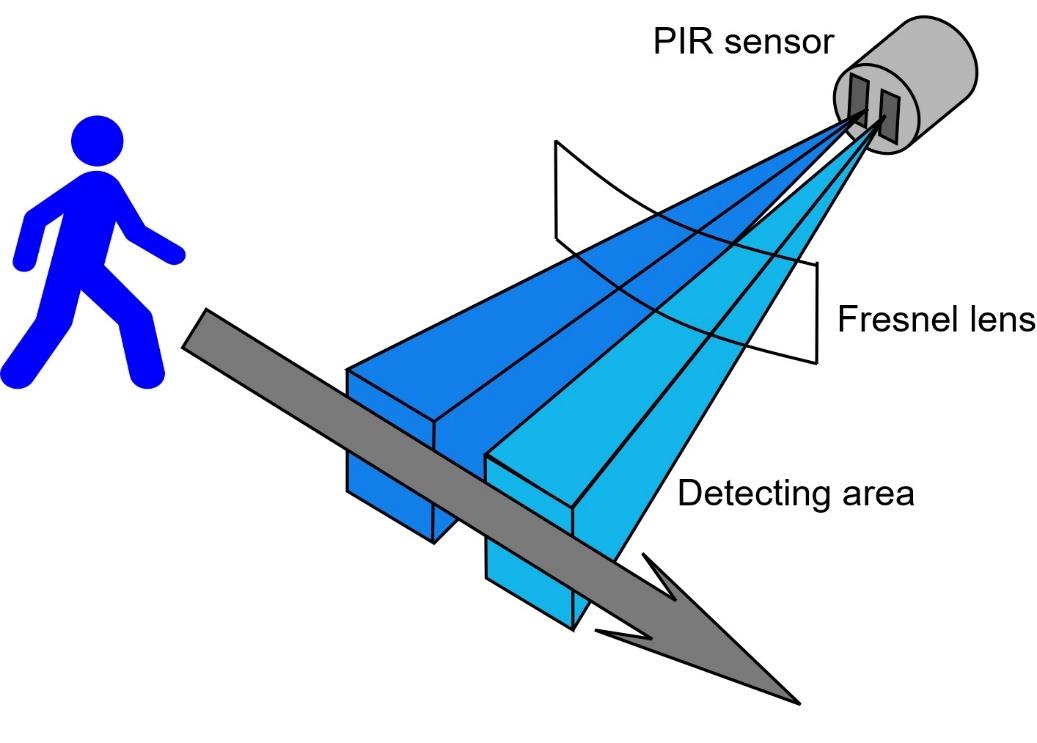 Figure 1-1: Basic Operation of a PIR SensorImage source: The author The PIR sensor compromises a core sensor of photo-reactive material sensitive to infrared light and a Fresnel lens. We will talk about the lens later. There are 2 slots in the sensors that allows it to see out a distance within 2 zones. In normal conditions, when no warm object is present, the radiated infrared heat from buildings and surroundings is consistent across the zones. The output from the sensor is stable.
Figure 1-1: Basic Operation of a PIR SensorImage source: The author The PIR sensor compromises a core sensor of photo-reactive material sensitive to infrared light and a Fresnel lens. We will talk about the lens later. There are 2 slots in the sensors that allows it to see out a distance within 2 zones. In normal conditions, when no warm object is present, the radiated infrared heat from buildings and surroundings is consistent across the zones. The output from the sensor is stable.
When a warm object that is radiating infrared light passes through a zone, the photo-reactive material will cause a positive differential change in the output voltage of the sensor. Likewise, when the body leaves the zones there will be a negative differential voltage change. These changes are used to trigger the motion detection. Figure 1-2 illustrates the output of the sensor. 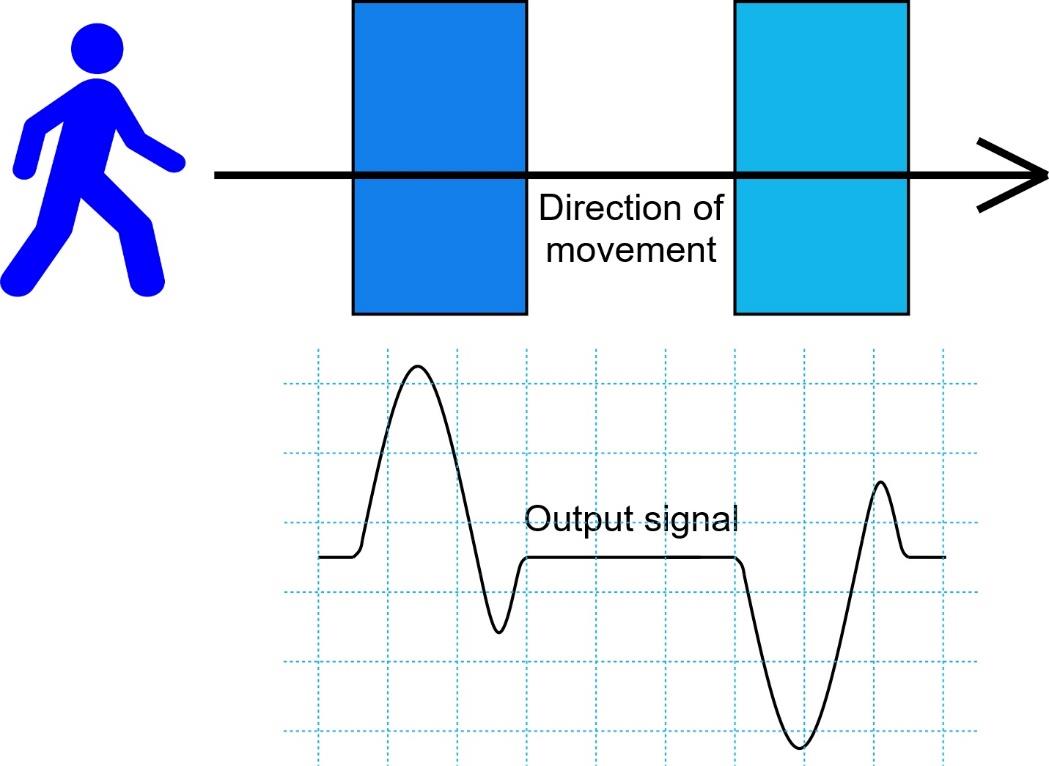 Figure 1-2: The Voltage Differential Output of the PIR SensorImage source: The author Some PIR sensors have extra electronics on board to convert this voltage differential into a logic high or low. Logical high signifies motion detected.
Figure 1-2: The Voltage Differential Output of the PIR SensorImage source: The author Some PIR sensors have extra electronics on board to convert this voltage differential into a logic high or low. Logical high signifies motion detected.
It is this sort of sensor that I will be using. What about Fresnel lenses? In our simplified example above there are just two detection zones. In real sensors we will want many more zones. The lens assists with this requirement. First, why use a Fresnel lens? This type of lens was invented in 1822 by Augustin-Jean Fresnel and came into common use within lighthouses. The main advantage of this type of lens is that it uses much less material than an equivalent conventional lens.
Next pageFont size:
Interval:
Bookmark:
Similar books «Range Finding, Object Detection and Object Avoidance Book 4 of the Arduino Short Reads Series nodrm»
Look at similar books to Range Finding, Object Detection and Object Avoidance Book 4 of the Arduino Short Reads Series nodrm. We have selected literature similar in name and meaning in the hope of providing readers with more options to find new, interesting, not yet read works.
Discussion, reviews of the book Range Finding, Object Detection and Object Avoidance Book 4 of the Arduino Short Reads Series nodrm and just readers' own opinions. Leave your comments, write what you think about the work, its meaning or the main characters. Specify what exactly you liked and what you didn't like, and why you think so.

